Deep Learning: Everything You Need To Know
Faculty Mentor:
Ms. Ankita Chopra
Student Name:
Ranvir Singh Chana (MCA-2 nd Year)
1.INTRODUCTION
Artificial Intelligence is already here, empowering many aspects of our modern society and is advancing at the speed of light with new researches and breakthroughs coming out every now and then. It’s everywhere from amazon’s recommendations to your Instagram feed and snapchat filters to Tesla self-driving vehicles. AI is used to identify objects from images, give out relevant search results and produce advertisements which are aligned with the interests of the user and the list goes on. And one of its biggest contributors is deep learning. So, what is this deep learning all about? Why is everyone in the IT industry so hyped about deep learning, machine learning and AI? How is deep learning different from machine learning? How does this technology even work? And the most important question of all, why should you even know about it?
Let’s dig a little bit deeper and find out everything we need to know about Deep Learning.
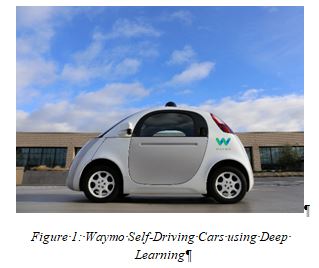
2.THE “WHAT” AND THE “WHY” OF DEEP LEARNING
Deep learning is a sub-category of machine learning, which is an application of Artificial Intelligence.
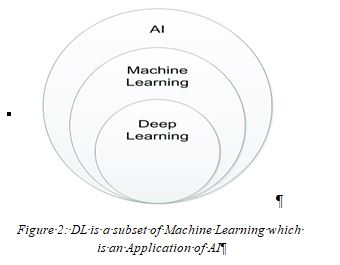
Both machine learning and deep learning use algorithms that seem to learn from the data. When these algorithms are provided with training data it becomes a model. You can think of these models as a mathematical representation of areal-world process. Deep learning models are a class of artificial neural networks which mimic the neural networks present in the human brain. These models are trained on different types of data such as images, text files or sound etc., to solve a particular problem or to perform some function. Some of the problems and functions which deep learning is used to approach are automatic driving cars, automatic game playing, colorization of black and white images, handwriting generation and recognition, adding sound to silent movies, toxicity detection for different chemical compounds and many more.
3. HOW DOES DEEP LEARNING WORK?
To learn how deep learning works we will need some basic understanding of what machine learning does. Let us tale A Glimpse of What Machine Learning is:
“Machine Learning is the field of study that gives computer the capability to learn without being explicitly programmed.”
Machine learning is an application of artificial intelligence. The basic goal of Machine Learning is to simulate human learning capability to adapt and overcome the unexpected conditions and problems without any human intervention. This learning process begins with some data, such as images, text, sound etc. and is fed into machine learning algorithms. These models then help us to look for patterns in the data and make better decisions on similar data in the future. For example, based on previously spam marked emails, email services automatically filters out new emails into inbox and spam folder.
Now we will look into some Machine Learning methods:
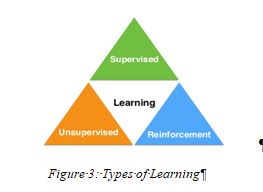
- Supervised Machine Learning- These algorithms can be applied to what has been learned in the past from labelled data which can be used to the new data. It is basically similar to a student being taught by a maths teacher, the way the teacher teaches them how to solve a problem and they apply that acquired knowledge onto new different questions. For example, you feed labelled photos with information about what is on them and then you train a model to recognise similar things on new photos.
- Unsupervised Machine Learning– These class of algorithms are used when training data is not labelled or classified. It explores the data and draws out hidden structures from the unlabelled data. Basically, it pulls order out of chaos. For example, you have some photos and you don’t actually know who all are in those photos and you want to divide these pictures into piles and segregate on the basis of individuals in the photos.
- Reinforcement Machine Learning – These algorithms rely on various techniques to find the best possible behaviour or path they should be taking in a specific situation using a system of reward and punishment. It’s all about maximizing reward in a particular situation. Possible applications in real world are like controlling robotic navigation using negative feedback if the robot collides into obstacles.
4.HUMAN BRAIN AND DEEP LEARNING
As mentioned before, deep learning is a branch/subset of machine learning that is based on algorithms which are inspired by the working of neurons in a human brain. There are billions of neurons in a human brain and those neurons are connected to thousands of other neurons.
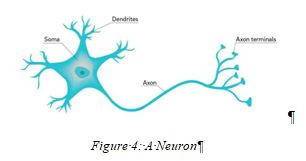
These neurons are, by themselves, almost useless but when we talk about their network and the electrical impulses between them, that’s what helps us to think, remember, feel, see, hear, taste etc. Deep learning is trying to mimic this network, which is known as artificial neural network.
5.WHAT EXACTLY ARE ARTIFICIAL NEURAL NETWORKS AND HOW DO THEY WORK?
Artificial Neural Networks (ANNs) are one of the main tools used in Artificial Intelligence. These systems are basically inspired by a human brain as mentioned earlier. ANNs are intended to replicate the learning process of a human brain. These are excellent for finding patterns which are otherwise very difficult for a programmer to extract from the data and ensure that the computer recognises it
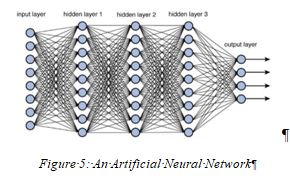
ANNs have been around since the 1940s but it’s only since the last decade that they have been used intensively in AI. Major reason is the increasing use of deep learning which allows multiple hidden layers (explained below) which are used for more complex problems.
Now let’s see how ANNs work.
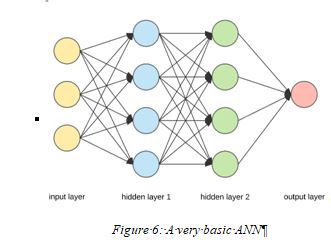
Consider this picture above, it’s a simple network of artificial neurons (Figure 5). The set of neurons on the leftmost side is called input layer, the two sets in the middle are called hidden layers and the rightmost set is called the output layer. Data is fed through the input layer; processing is done in the hidden layers and the output is produced through the output layer. A neural network which has more than one hidden
layer is generally called Deep Neural Network. We can also say that our neural network consists of 3 input units 8 hidden units and 1 output unit. In a real scenario there can be many input units, output units and hidden layers.
This is fundamentally similar to how millions of neurons in a hierarchy and their network which are interconnected works in our brain. When we think, see, hear, taste or experience something, an electrical impulse is fired from one neuron to another, called synapse, through which we learn, remember and memorize in our daily life.
Let’s talk about some common types of Neural Networks.
There are multiple types when it comes to Neural Networks. Picking the right one depends mostly on the type of training data used and the application. Each type comes with their own specific use cases and complexities.
- The most basic type of neural network is called FeedForward Neural Network. In this type the information only travels forward in a network i.e., from input layer to output layer.
- A more widely used neural network is a Recurrent Neural Network or RNNs. In RNNs the information can flow in multiple directions. This results in greater learning ability and is used for more complex tasks such as language recognition and handwriting recognition.
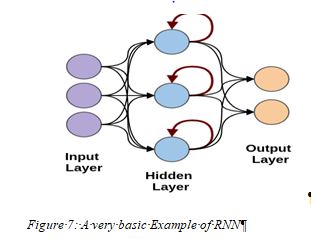
- Another common type is Convolutional Neural Network or CNNs. These are very similar to ordinary NNs but makes an assumption that inputs are images. CNNs are mainly used to do image recognition and classification. CNN image classification takes an image as input, processes it and classifies it under various categories, think of categorising animals into cats, dogs, horses etc. Images are seen as matrix of pixels. Images are converted into multidimensional arrays and then it is processed. Facial recognition, analysing documents, understanding climate etc. are some of CNNs applications.
6.DRAWBACKS OF USING DEEP LEARNING
Every technology comes with their own limitations or drawbacks and deep learning is no exception. Let’s give it a look at what are the major limitations of using deep learning for solving problems.
- Data
“Artificial Intelligence is only as smart as the data provided.”
When training a deep learning model, one of the most important ingredients is the data and hence the problem. A very large amount of data is required to train deep learning algorithms. This is because deep learning algorithms learn progressively and are able to give more accurate results with huge data.
Another related problem is that companies like Google, Facebook and Microsoft are able to gather almost infinite amount of data but smaller companies which may have a good or even a better idea may not be able to do the same thereby decreasing the potential of this technology.
- Retraining
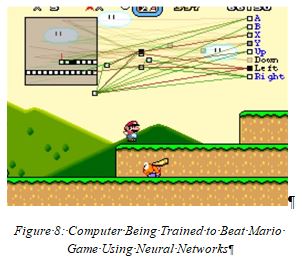
Deep learning models are very efficient and are able to give very good results to a particular problem once they are trained with the data. But the catch is that they are unable to repeat this with a similar problem and need to be trained again with the data to form a solution. This is because Neural Networks are highly specialised to a specific problem and reassessment is needed to solve those problems which are evendifferent from the original one. For example, Google’s DeepMind trained a system to beat some Atari console games but it had to be retrained every time to beat in the next game.
- High Processing Cost
Another challenge is that deep learning requires very powerful processing units. Also, more cores in processing units performs much better when it comes to deep learning models.
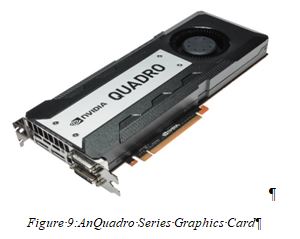
This means most of the processing units are either multicore graphics processing units (processors in your graphics cards) or something similar but specifically made for deep learning such as NVIDIA Quadro series graphics cards. But the thing is large processing power doesn’t come cheap. Also, these processing units generates a lot of heat thus requiring a good cooling solution and consume a ton of electricity thereby increasing the total cost of operating the hardware.
7.WHAT ABOUT THE FUTURE OF DEEP LEARNING?
When it comes to future of anything, it’s almost uncertain and anything can happen. But seeing current trends in developments in AI we can at least predict a few obvious ones.
- Making Self-driving Cars Safer and Successful
-
Although tesla’s self-driving cars are giving amazing results and a hope for the future but there are still some unfortunate road accidents that happens due to miscalculations.
- Even if you ignore the accidents there are still many limitations as to what autonomous vehicles can achieve. But seeing the current trends in developments and involvement of large corporations in autonomous vehicles like tesla, google, apple and uber, one thing is for sure that in the future these cars will become 100 percent accurate and autonomous.
- More Simplified Programming
Coding is an integral part of developing and maintain deep learning models. But coding with AI oriented deep learning is quite complicated and need highly skilled developers to developed new algorithms. In the future it is expected that coding part becomes less complicated or deep learning becomes less coding centric which will enable to focus the resources towards developing models rather than coding it.
- More Human-like Virtual Assistants
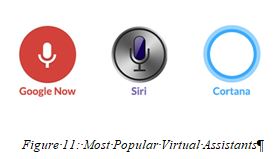
Even today virtual assistants and chatbots are delivering some very impressive results and the recent Google’s virtual assistant is just unbelievably smart and human-like but I think there still is a big room for improvements.
Developments in deep learning would give a way to improve speech recognition and natural language processing techniques which would pave the way to virtual assistants understanding people better and speaking same words in different tones and accents making virtual assistants more accurate and realistic.
- A Shift Towards Unsupervised Learning
One of the most important paradigm shifts is the shifting towards unsupervised learning. This would happen majorly because of increasing availability of massive datasets in the future. It will also become easier for engineers to develop AI models at more cost-effective prices because they won’t need to acquire the labelled data for projects and that would be able to work on unlabelled data which even today forms the majority of the data available.
8.REFRENCES
- https://towardsdatascience.com/deep-learning-101-for-dummies-like-me-a53e3caf31b1
- https://www.dummies.com/programming/big-data/data-science/what-is-deep-learning/
- https://becominghuman.ai/what-is-deep-learning-and-why-you-need-it-9e2fc0f0e61b
- https://towardsdatascience.com/simply-deep-learning-an-effortless-introduction-45591a1c4abb
- https://towardsdatascience.com/intro-to-deep-learning-c025efd92535
- https://mse238blog.stanford.edu/2018/07/
tanuarya/drawbacks-of-deep-learning/
- https://www.digitaltrends.com/cool-tech/what-is-an-artificial-neural-network/
- https://www.youtube.com/watch?v=qv6UVOQ0F44&t=214s













